Stevie Ray Vaughan is easily one of the most well-known and respected guitarists to ever exist. Though his career was short, he created a legacy that few guitarists can match up to. He was truly a master bluesman, and players still look up to him to this day.
We could spend all day talking about SRV, his music, and his legacy. However, today we’ll be looking at the guitars he played. SRV played numerous guitars throughout his career—and not all just Stratocasters like you might assume. So let’s take a deeper look at the guitars of Stevie Ray Vaughan.
Before that though, note that we won’t be talking about every single guitar SRV owned. He was known for buying guitars as he traveled, and his collection was quite large. We’re going to focus more on the guitars that were important to him, got played a lot, or are unique in their own right. With that out of the way, let’s begin!
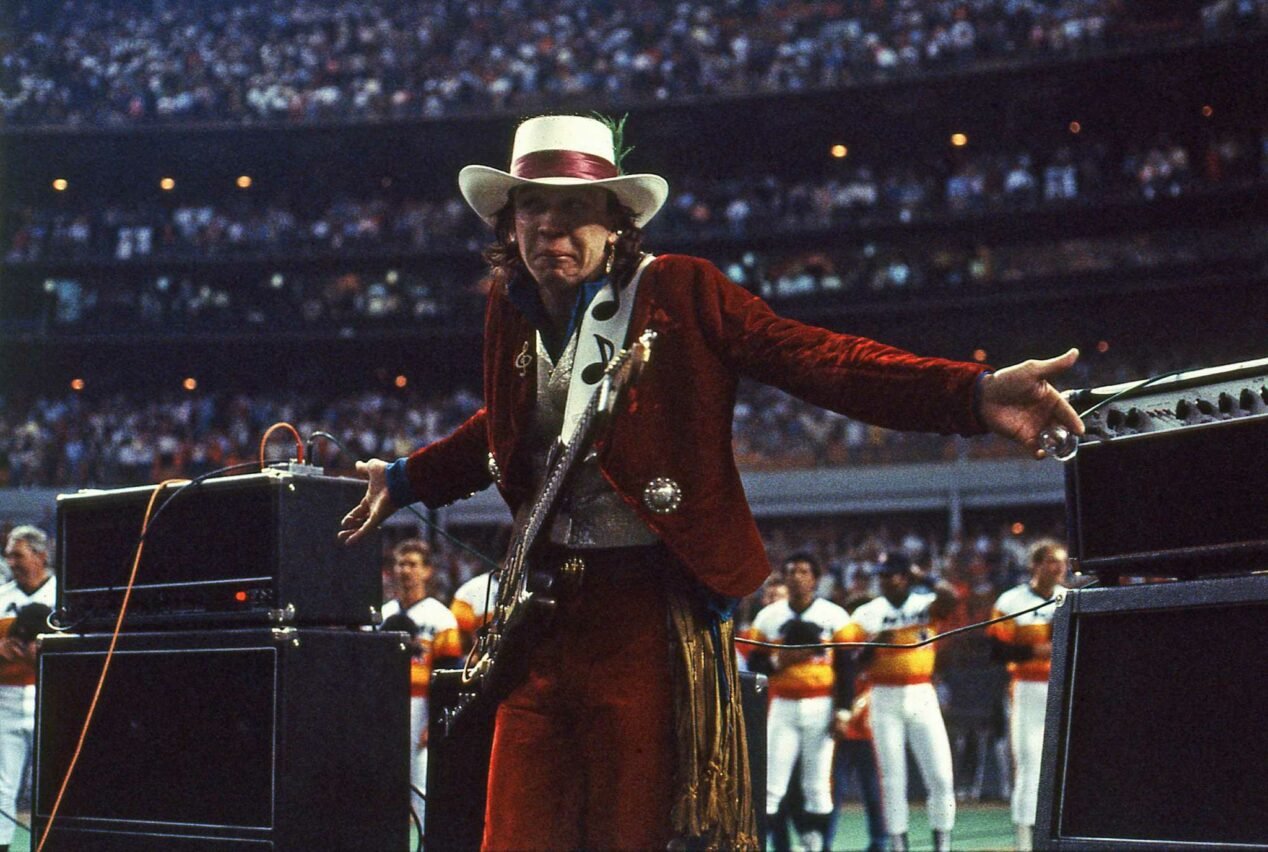
Childhood and Teenage Years
We all have to start somewhere, and SRV’s no different. So let’s start with the guitars from his childhood and teenage years.
1957 Gibson ES-125T 3/4 Sunburst Archtop
This Gibson archtop was SRV’s first guitar and the one he started to hone his skills on. 1957 was the first year of production for the ES-125T 3/4. It features 22 frets, two F-holes, a raised pickguard, and volume/tone controls. Its serial number is U142221.
Stevie was gifted this guitar by his brother, Jimmie, who had been given it by their father. This guitar had numerous scratches and dents from SRV, indicating he spent a lot of time playing it. This was SRV’s main guitar until he got the next guitar on this list.
1951 Fender Broadcaster (Nocaster) “Jimbo”
Like the ES-125T, SRV was also given this guitar by his brother Jimmie, and it was his first proper electric guitar.
According to one story, SRV found the guitar in pieces in a cupboard in their house. He put the guitar back together, and Jimmie said he could have it. Another claims that Jimmie gifted the guitar to him because he wouldn’t stop borrowing guitars.
After SRV got the guitar, a few changes were made. He modified the tone control to be a second volume control, and he carved the name “Jimbo” into the back of the body. According to Reverb contributor Casey Hopkins, he also stripped the finish and added a neck pickup.
There are multiple theories as to what year and model this guitar actually is. The main theory is that it is a Nocaster, the name given to a select group of Telecasters that were made as Fender shifted from the Broadcaster name to Telecaster, making it incredibly valuable today even if SRV didn’t own it. You can learn more about Nocasters on our blog post about the History of the Fender Telecaster.
However, other theories claim it’s a 1952 Telecaster that had the headstock logo removed. Another theory states that it’s a 1951 Esquire, which originally only featured a bridge pickup. This is Hopkins’ beliefs, which make sense given his claim about adding a neck pickup.
Regardless of what year/model it is, SRV traded this guitar in 1971 for a 1963 Epiphone Rivera (more on that guitar later). Years later though, he regretted trading it and publicly announced he wanted it back. Sadly, no one came forward, and the guitar never made it back to him.
It was however rediscovered in the 00s. Loni Specter of the Los Angeles Amp Show saw a studio musician playing the guitar and realized what the guitar was years later after reading about it in a book. The guitar was eventually purchased, authenticated by Jimmie, toured around at various shows/museums, and sold for $250,000 in 2008.
The Strats
Now, let’s move on to the guitars that SRV played for the bulk of his career. These are the guitars he used on a regular basis for gigging and recording, and most of them are quite famous at this point. And as you’d expect, they’re all Strats.
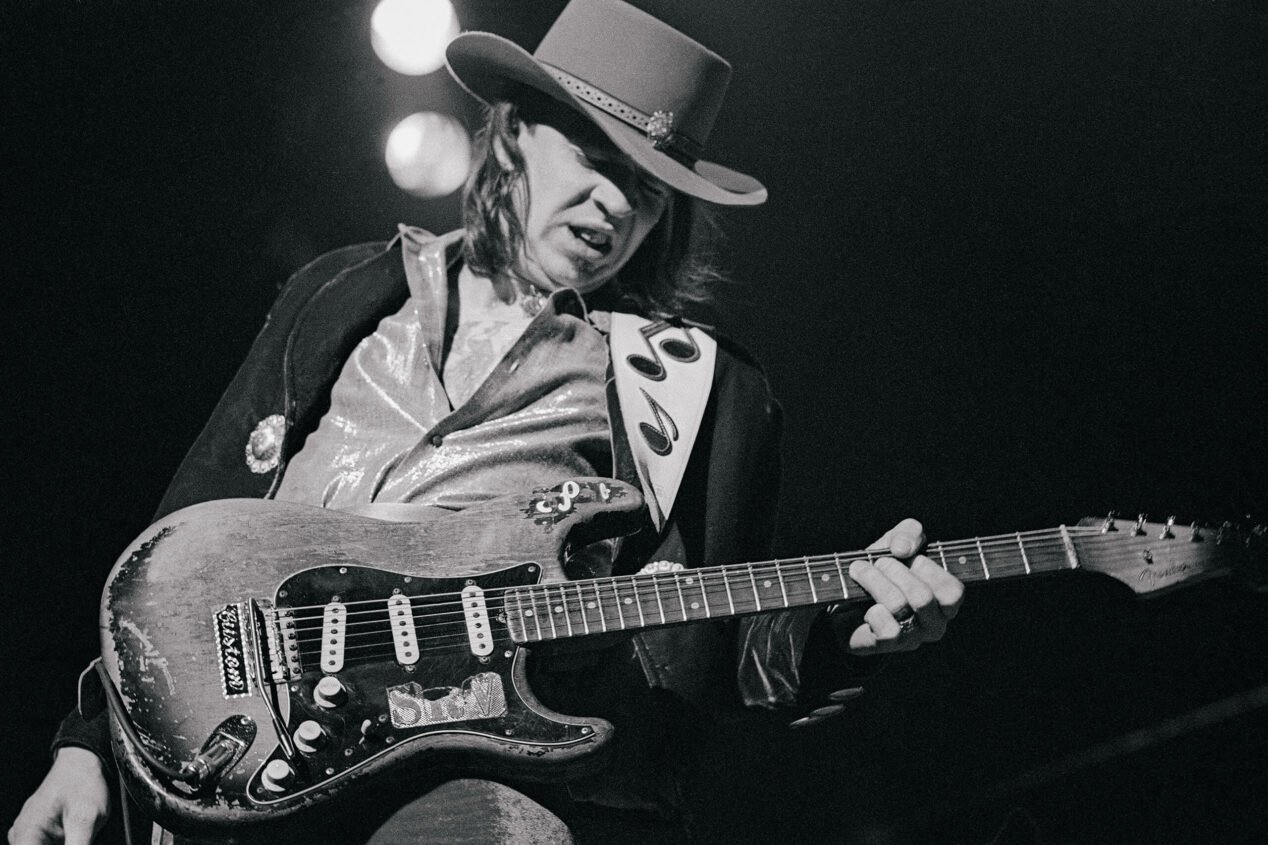
1962/63 Fender Stratocaster “Number One”
As the name suggests, this was SRV’s main guitar. He got it in a trade from Ray Hennig, a guitar shop owner in Texas, in the early 70s. According to Hennig, the guitar was traded a few weeks earlier by Christopher Cross and was the worst guitar he’d ever had in the shop.
The guitar is actually a partscaster. SRV is rumored to have taken out the pickups and seen a 1959 stamp on them, believing it was a 1959. However, the guitar was taken apart in the 80s, revealing a 1963 stamp on the body and 1962 stamp on the neck.
The guitar originally had a white pickguard, but that was swapped out for a black with one SRV’s initials stickered one. It also has a left-handed tremolo bar, a modification that has since become somewhat popular.
The neck was swapped at some point in the mid-80s. Because SRV was such a heavy-handed player, he wore through frets quickly. This meant lots of fret changes that, combined with his playing, eventually wore down the fretboard.
Later in 1990, a piece of stage equipment fell on top of SRV’s guitars. The neck was broken and had to be replaced yet again. After his death a few weeks later though, the original neck was put back on to keep the guitar in its original state.
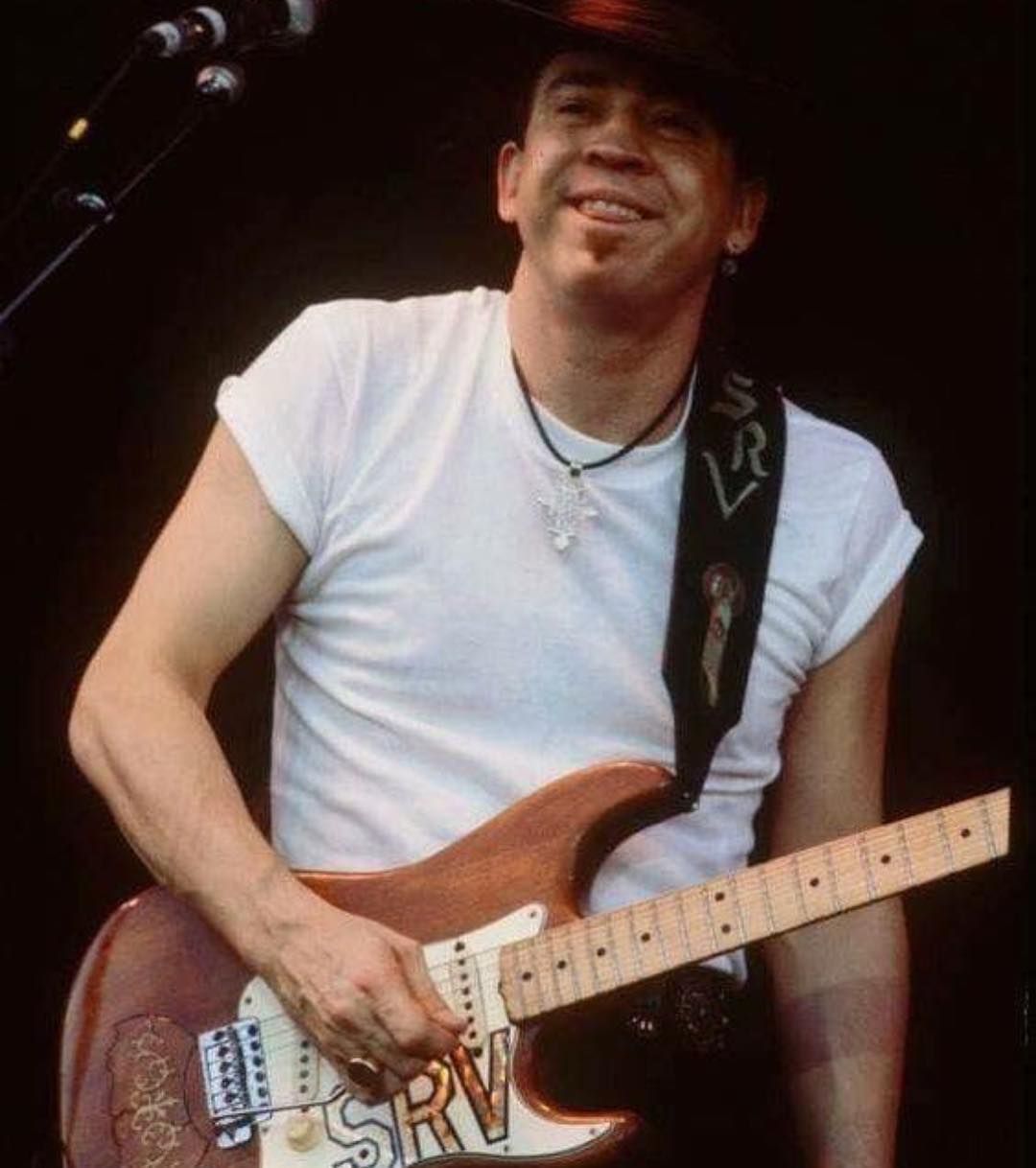
1963/64 Fender Stratocaster “Lenny”
SRV was gifted this guitar in 1980 by his wife Lenora and their friends. He’d seen the guitar in a pawnshop but couldn’t afford it. Lenora convinced them to pool their money and buy it for him as a gift, and the guitar was his a few months later.
The guitar is a 1963 or 1964. It came from the factory with a three tone sunburst, but the previous owner gave it a natural finish and inlaid a mandolin-style pickguard below the bridge.
As for modifications by SRV, he added his initials to the pickguard, swapped out the neck for one with a rosewood fretboard in 1981, and added Mighty Mite saddles. He also had Mickey Mantle sign the back of the guitar in 1985. Other than that, the guitar is as-is from the original owner.
The guitar was eventually purchased by Guitar Center in 2004 and can be found at the Guitar Center in Austin.
1959 Fender Stratocaster “Yellow”
Like “Number One,” this is another guitar from a professional that ended up in a guitar shop in Texas. It was owned by Vince Martell of Vanilla Fudge before SRV purchased it in the early 80s.
The most odd thing about this guitar is that it had a single neck pickup, which is odd for a Strat. Supposedly Martell had routed out the body to stuff it full of humbuckers. The owner of the guitar shop decided to cover up the routing with a pickguard instead, leaving it with a single neck pickup.
He made similar modifications as he did with “Lenny,” adding his initials to the pickguard and a set of Mighty Mite saddles.
Based on some photos, it seems like the guitar was restored to its original three pickup state in 1985. However, it’s difficult to tell and SRV didn’t really talk about the guitar much, so it’s hard to conclusively say.
Sadly though, this guitar was stolen in 1985. The guitar was never recovered. There are rumors it is at the Hard Rock Cafe in Las Vegas, but no one has ever been able to confirm it—so it seems unlikely.
1962 Fender Stratocaster “Red”
As with most guitars on this list, SRV bought this guitar from a shop in Texas in the early to mid 80s. It started out as a sunburst Start, likely repainted by the original owner.
This guitar was relatively unmodified, being completely untouched until 1986. The neck was taken off and used to replace the neck one “Number One,” and the replacement neck was seemingly a knockoff left handed neck. He also added his initials to the pickguard. Outside of that, the guitar is a stock 1962 Stratocaster.
In 1990, it was damaged in the same incident that damaged “Number One.” The neck was damaged, and it was replaced with a new rosewood neck from Fender.
Hamiltone Lurktamer Stratocaster “The Main”
This guitar was commissioned by Billy Gibbons of ZZ Top as a gift to SRV, built by custom guitar builder James Hamilton. SRV got the guitar in 1984.
It has neck through construction, a two-piece maple body, and a three-piece neck. There is an abalone inlay across the fretboard splaying out SRV’s name. It also originally came with EMG pickups and Gibson style knobs.
The EMGs were swapped out for standard Strat single-coils, supposedly after they got wet and stopped working during the filming of Couldn’t Stand the Weather. The knobs were also changed to regular Strat-style knobs around this point as well.
1961 Fender Stratocaster “Scotch”
SRV bought this guitar from a shop at some point 1985 and was a fairly standard 1961 Strat. Information is scarce, but the guitar was allegedly supposed to be given away as a prize. However, SRV liked the guitar so much that he decided to offer up a different one instead.
Though it’s called “Scotch,” the guitar was most likely olympic white originally since it’s a 1961. The finished yellow, leaving the butterscotch looking finish that can be seen today. There was also a custom red and black pickguard added in the mid 80s with his initials.
Surprisingly, there’s little other information about this guitar. SRV used it somewhat often though, being one of his main backups.
1983 Custom Strat-style Guitar “Charley”
This was a custom guitar built by Charley Wirz, who owned a shop in Texas where SRV purchased numerous guitars.
The guitar is a bit of a Frankenstein, made mainly with DiMarzio parts. It has a white Strat-shaped body, rosewood neck, lipstick pickups, and two controls (tone and volume) instead of the usual three. It also has a hula girl sticker on the back of the body.
This guitar didn’t get used a whole lot, but he did use it from time to time. He used it on “Life Without You,” which was a tribute to Wirz.
Odds and Ends
Before we wrap up, let’s look at a few oddities in SRV’s collection. These are guitars that he didn’t use much or at all, but they’re all pretty interesting and worthy of some discussion.
SRV Designed Prototype
SRV designed this guitar himself in 1982, and he worked with various experts to try and make it a reality. By 1984, Gordon van Ekstrom had agreed to help him get it off the ground and possibly into production.
The most unique thing about this guitar is its shape, which is Telecaster-like but with a half circle cutout of the body behind the bridge. Interestingly enough, this shape is actually fairly similar to the body used for Abasi’s Concepts’ Space-T.
SRV also wanted to have the pickups in the shape of his initials. They reached out to Seymour Duncan, but they said the idea was not possible.
This guitar was used once live and never used live again. It never reached production, and the original prototype was never finished either. Still, this is a real oddity in SRV’s collection that indicates what could’ve been had he eventually been able to make a custom model.
Tokai Strats
On the cover of SRV’s album Texas Flood, he can be seen playing a Tokai Springy Sound Strat. Odd for a guitarist so dedicated to Fender, but nothing that weird, right? Well, this story gets complicated.
According to those around him, SRV was never known to have bought or played any Tokai instruments. So where exactly did this guitar come from, and why was he depicted with it on the cover?
A book by Craig Hopkins contains a photo of SRV playing the Tokai live, so he did use it at least once. Hopkins also claims there was an endorsement deal in the works, explaining why he was using the guitar. There is a signed contract of this endorsement, but it appears to be forged according to experts.
There’s also a fairly infamous Tokai catalog that featured SRV playing various Tokais on the cover, and it’s likely the forged contract was why that catalog happened. SRV was apparently very upset at the marketing campaign.
On top of that, there have since been other Tokai Strats auctioned off that are confirmed to be his, one of which was a Tokai AST. This seems to be one of the guitars featured in the Tokai catalog.
It seems the most likely scenario is that SRV was given some guitars by Tokai as a free endorsement. He played them a bit, was pictured with them, and they ended up on the album cover and in the catalog.
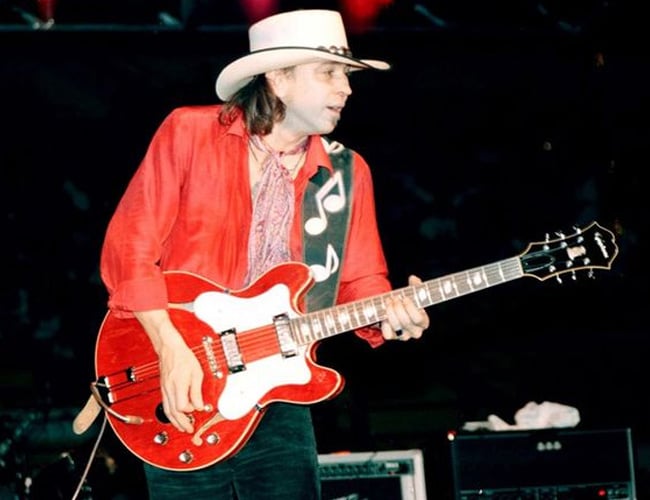
Epiphone Riviera
As mentioned earlier, this is the guitar SRV traded the “Jimbo” Telecaster for. It was relatively early in his career, and he had yet to realize his love for Stratocasters. He was looking for “the” guitar for him and ended up loving this one, resulting in the trade.
He used it live in many of his early bands like Blackbirds and Nightcrawler. Even after realizing he preferred Strats, he would use the guitar on stage. And after he stopped using it frequently, it still stayed in his collection.
An interesting note is that he changed the pickguard configuration multiple times. Sometimes it would appear with a single pickguard, and sometimes without. It ended up with a double pickguard at one point as well. It’s unknown why SRV was seemingly undecided on the pickguard.
While this might not be the most interesting guitar SRV owned, it’s one he clearly loved and also played an important part in the story of his “Jimbo” telecaster.
1930 National Duolian Resonator
Last but not least is a 1930s National Duolian. He believed that the guitar was once owned by Blind Boy Fuller, an early blues guitarist. The guitar was given to him by a roadie, Byron Barr, who bought it in 1981.
SRV claimed the guitar was a 1928 dobro, but the supposed serial number (C704) indicates it’s actually a Duolian—a model that wasn’t manufactured until 1930.
Regardless, the guitar was said to be a favorite of SRV and a prized possession. He was known to take the guitar with him on tour, regularly playing it backstage and in his free time.
Stevie Ray Vaughan and His Guitars
Stevie Ray Vaughan may have had a tragically short career, but he accomplished incredible things in that short period of time. He became one of the most beloved and respected blues guitarists of all time, cementing himself in music history.
And in that short career, he used and collected a wide variety of guitars from vintage National Resonators to classic Strats to custom-built guitars. One thing you can definitely say about Stevie Ray Vaughan is that he truly loved guitars, especially Strats. So pick up a Strat, throw on some Stringjoys, and play some blues to honor the great SRV!
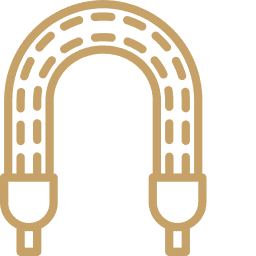
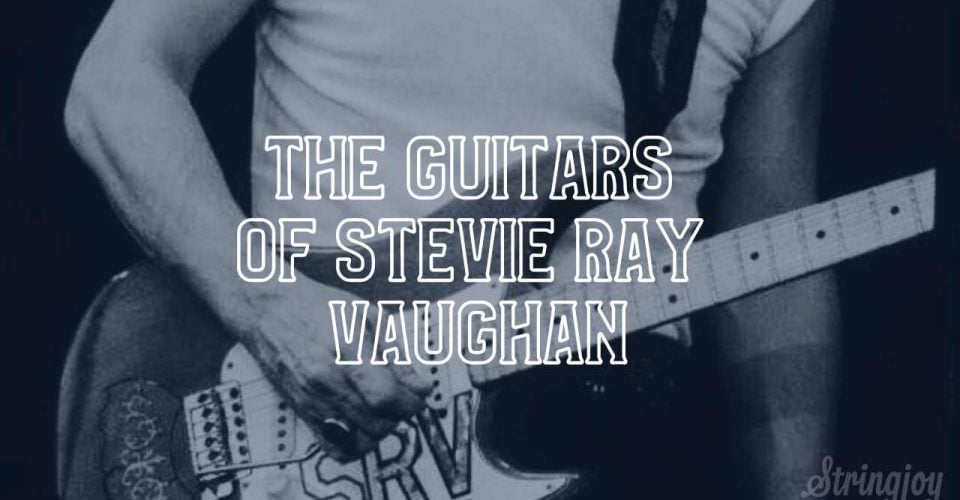
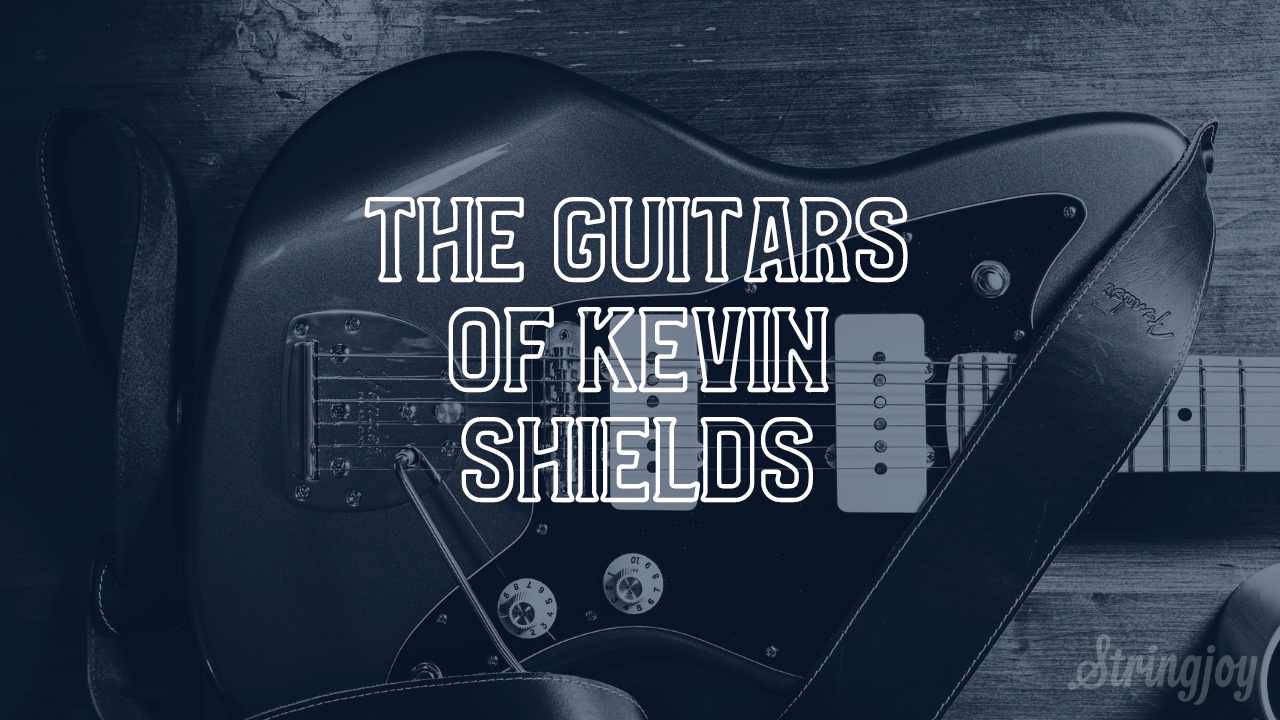

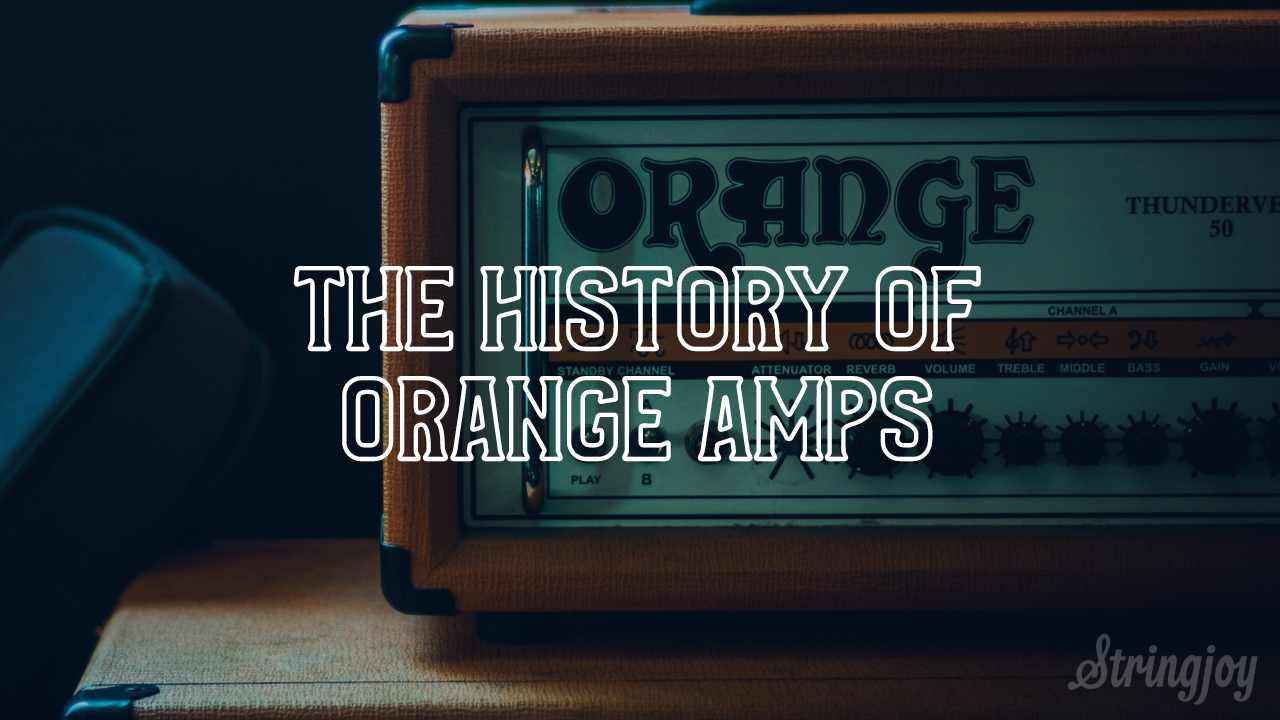
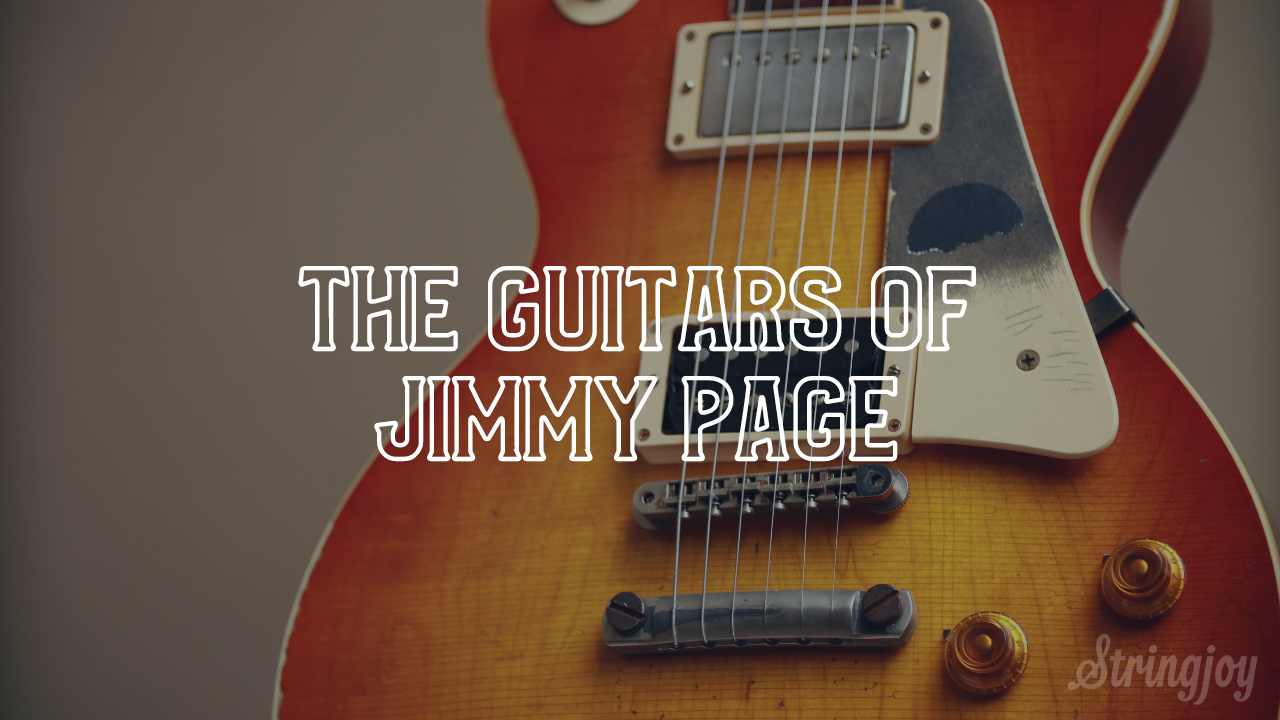
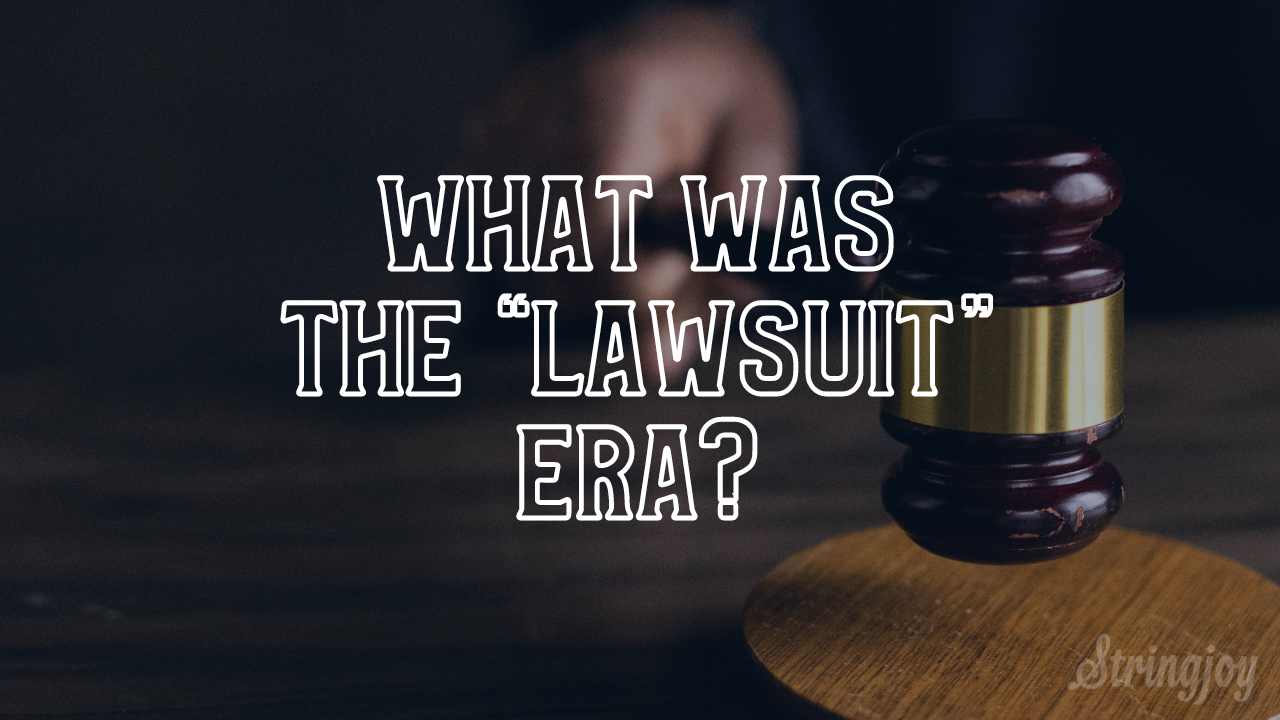

One Response
Just clickbait, lacking informational depth and Photos…..You have a chance chance to rewrite, otherwise grade remains D.